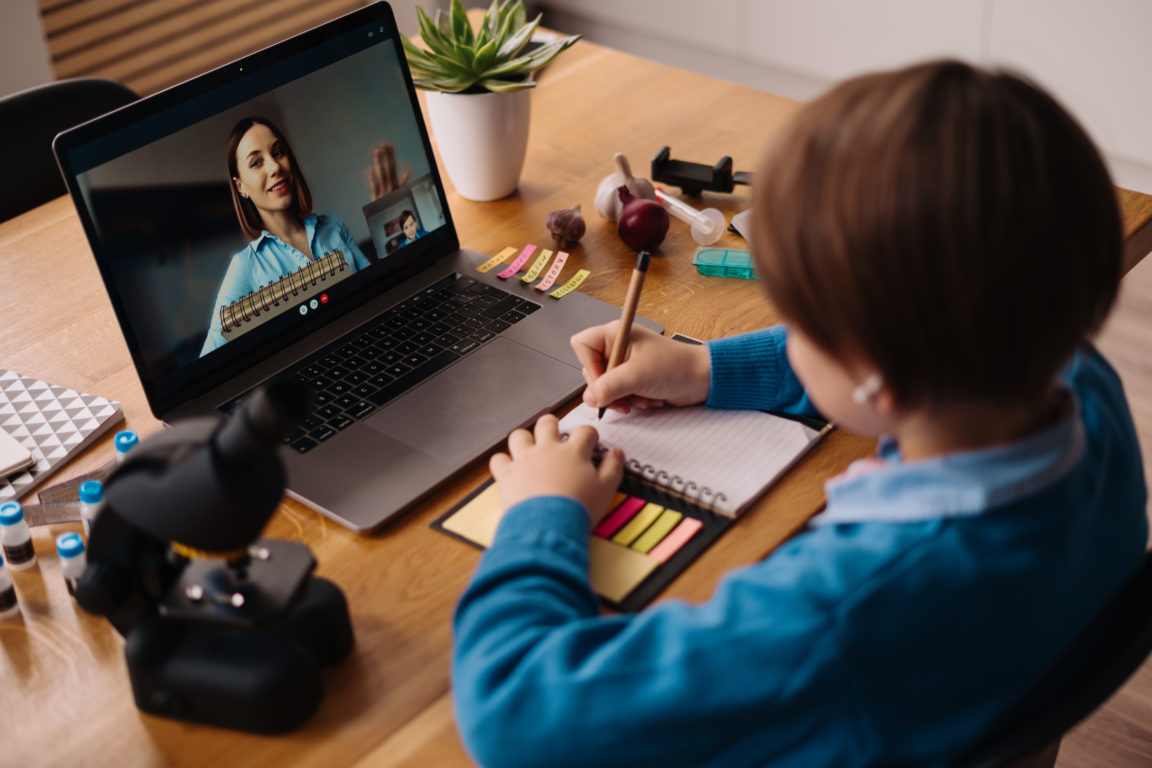It may seem that running a distance lesson is a simple task that any teacher can already manage. Moreover, it is less time-consuming than usual. But actually, it is not. Only a well-thought-out plan, patience, and communication in advance will help to make the remote lesson informative and interesting. Here are a few tips for teachers who want to engage children through the screen.
Equity and access
You need to choose a platform like Canvas or Google Classroom for interacting with students — this is where you will send study sheets and assignment forms. This is a very important point, because the quality of learning depends on the platform containing the educational content.
You can simply pick up links to various web resources for self-study, quizzes and online exercises, or you can write your own texts, create videos, presentations and tests using various Internet services. However, more comprehensive implementation of studying with practice tasks, homework exercises and tests can be fully implemented only with the help of a unified approach. And the use of online learning platforms is highly recommended for this purpose.

Timetable of classes
Record the “class time” (especially the first half of the day) allocated to the process of studying and completing tasks. When planning your timetable, remember that:
- you and your colleagues are not the only ones delivering online classes, so try not to overload the children with too much information;
- learning and assignments during the one lesson should take no more than 45 minutes to 1 hour for the child;
- In order to meet the timetable, all the information should be created (picked up) by the time the lesson starts, placed in appropriate places and delivered to the students (to avoid technical problems and wasted time right in the classroom).
- health and hygiene regulations are really important nowadays (taking into account the age of the pupil).
It would be great if you could negotiate the timetable with your colleagues. Do not break up the learning day in a distance learning format by lessons, but by the blocks you want to work on. You can do immersion days (in subjects for younger students or in subject areas for primary and secondary schools) as part of your distance learning.
Communication and connection
Communication with students is the most important thing in distance learning. You need to know at all times whether the task is clear to the students, whether the study course is fully accessible, etc.
One of the conditions for effective remote work is frequent task changes and a lot of practice. It is difficult for children to absorb and assimilate large amounts of information or to carry out one task for a long time. Create a lesson with several types of tasks, for example 5-10 minutes for watching a video, 10 minutes for doing tasks, and 10 minutes for writing by hand.
Be sure to include a review of the homework (individual mistakes should be reported to the student personally, and achievements and interesting solutions should be reported to everyone; also a general overview of the students’ successes and failures, explanations of difficult issues, etc). This can be done in text form or by means of a short video review (which can be recorded on the phone, edited, and placed in the place where you communicate with the pupils).
It is a mistake to think that distance learning completely rules out interactive communication between the participants in an educational process. In some cases, it is even more effective, learn more about how it allows you to take everyone’s abilities into account without exception. You are free to organize discussions in groups, to communicate both during the learning phase and during assignments. For this purpose, you need to choose the right educational platform or create quality feedback using a messenger or chat room.
Try to create some tasks for group work — a common project, a complex task with role allocation, etc. All of this can be implemented using modern open source technologies, webinars, or online tools.
If you’re looking for a way to boost your team’s productivity, try implementing group projects. You can use modern open sources technologies like webinars or online tools in 2021 that will help bring everyone together while they complete these tasks on their own time and without being distracted by other responsibilities. I’ve compiled 24 of the best webinar software into my list – take it from me; if there was ever an answer as simple yet sophisticated towards promoting creativity (teamwork), this would be it!

Technology and tools
There are many tools to help teachers organise distance learning. Below we review the most popular and useful ones:
Zoom is a great tool for online lessons. Learn here how you can make calls, show your screen, record a meeting, divide students into groups (e.g. send them into separate ‘calls’ to discuss for a specific time), and so on.
Movavi Video Converter — recorded meetings (lessons) can be converted to the required format (the most universal – mp4), compressing (reducing the size, so that, to upload it to the cloud and send it to students, so video will require less disk space), cropping unnecessary stuff. If it is some kind of extra lecture (without participation). Check how to add subtitles to a video to make it easier for students to perceive the information if, for example, they want to repeat the material away from home (there is no sound option).
Facebook — a well-known means of communication. Learn how to make a group conversation on Facebook for the class (with the teacher) so that you can clarify assignments/ask questions, discuss organisational issues, report news. In addition, it is easy to use from any device.
Cloud — If you want to arrange a lesson using your own materials, an electronic diary with a homework module is the most convenient tool for posting assignments to students. Any cloud-based service can help share tutorials/textbooks/lesson notes and other learning materials, e.g. Google Drive and Dropbox.

Well-being and flexibility
Cognitive motivation plays a major role in distance learning. That is the motivation for conscious action. When a child does the work not for fear or to stand out from the rest or to get a reward, but to gain knowledge. To become smarter, to expand their horizons, to rise in their personal development.
This is the most difficult motivation for a child who is not yet conscious of being an independent person, does not understand his place in society, does not understand how knowledge of biology or physics can help him to become successful and happy. Best practices for remote learning show that it is possible for teachers to find these triggers.
How can this be done?
Psychologists and teachers distinguish between several types of motivation. By understanding these, it is easier to understand what motivates a child to learn:
- the desire to be erudite and educated
- a desire to expand their social circle together with their horizons
- a desire to explore their talents and build a career.
Here are some basic guidelines for teachers to help increase a child’s motivation to learn:
Explain how to set up the workplace
A neatly arranged workstation in a common style and beautiful desk accessories will lift their spirits and motivate them to learn.
Follow daily schedule
When studying remotely, it is important to stick to a routine – getting up and going to bed at the same time, studying in a structured time slot and engaging in physical activity.
Dress appropriately for studies
Do not allow your students to study in pyjamas or with tangled hair. Explain pyjamas are not appropriate for sitting in class and set the mood for work.
Draw up a timetable
A colourful timetable will lighten the mood. It makes it easier to know when to go out.
Provide healthy snacks
Children should not be distracted during lessons to go to the kitchen for a sandwich. Ask parents to prepare healthy snacks in the form of cereal bars, nuts or yogurt.
Do not allow distractions for pets
Pets ─ are one of the problems of remote work. There should be no temptation to get distracted during lessons, so it is best to lock the furry/ feathered pets in a separate room.
Give them a break
Take your eyes off the monitor during breaks. The pupil should be encouraged to do some exercise, get some fresh air on the balcony, do some drawing or simply have a cup of tea.
Keep in touch with parents
Take an interest in your pupils’ life and get acquainted with their parents. This will encourage them to be more responsible.





